Earlier this year, I took a deep dive into RSC Anderlecht and how they have defended corner kicks so well.
It wasn’t through luck that their defensive record was so strong.
After discovering set-piece coach Yannick Euvrard has been integral to their success in that aspect, it is only fitting that we turn to their attacking corner-kick strategies and learn how they prepare for them.
In the first half of the season, Anderlecht scored 39 goals, with only two coming from set-pieces, I believe, making up 5% of their tally.
However, as the set-piece coaching team had more time to work on the different elements of set plays, they managed to positively impact their record from attacking set-pieces.
Since the turn of the year, which involves the last couple of games only being played against the other top-half finishers in the league, Anderlecht’s goal tally was slightly lower at a value of 31 goals, yet through the excellent work on the training ground, 7 of those goals came following set plays, making up 23% of their goals in 2024.
This is just a slight bit of evidence to show how having a dedicated team to improving set-pieces can more than triple the goal output of a team from set plays within one season.
In this tactical analysis, we will delve into the tactics behind Anderlecht‘s corner kicks, with an in-depth analysis of how they have used screens to be dangerous from corners.
This set-piece analysis will also explore the various ways in which they have achieved set-play success, whether that is through short routines, directing corners to weaker points of the opposition set-up, or through using screens and creating gaps in between the opposition zonal defences.
Attacks starting in the six-yard box
Much of Anderlecht’s attacking intent is centred on controlling three main areas around the opposition penalty area, with the starting positions of the attacking unit originating inside the six-yard box.
Control of the near side of the six-yard box gives Anderlecht the ability to guarantee the first contact, from where flick-ons can be created, to create opportunities around the back post.
Having the first contact also prevents the opposition from clearing the ball following under-hit crossing opportunities.
At the back post, having the dynamic superiority enables the player to dominate the aerial duel, from where any contact on the ball is enough to result in a goal.
The area around the penalty spot has multiple benefits to being dominated by purple shirts.
Any loose balls or blocked shorts are likely to fall around the penalty spot, where a player is located and ready to react.
Furthermore, having the player around the penalty spot in space enables him to arrive in the six-yard box with momentum to dominate the aerial duel as well.
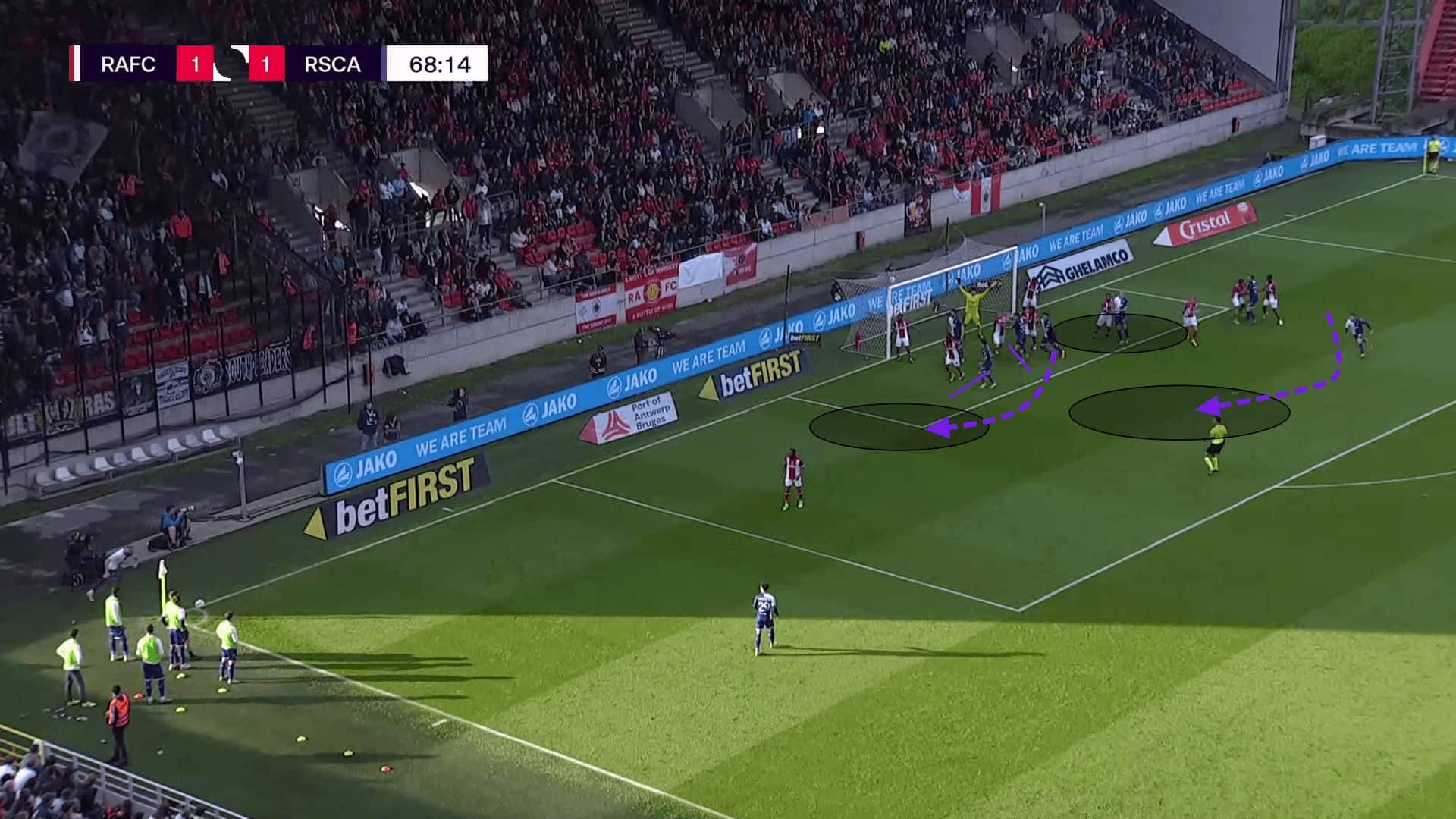
The two key reasons for having players starting inside the six-yard box are that 1) players are able to position themselves behind the shoulder of their markers to make the initial step toward the ball without being tracked by the defenders, and 2) they are in a position to set screens on their opponents in the last second without it being too obvious.
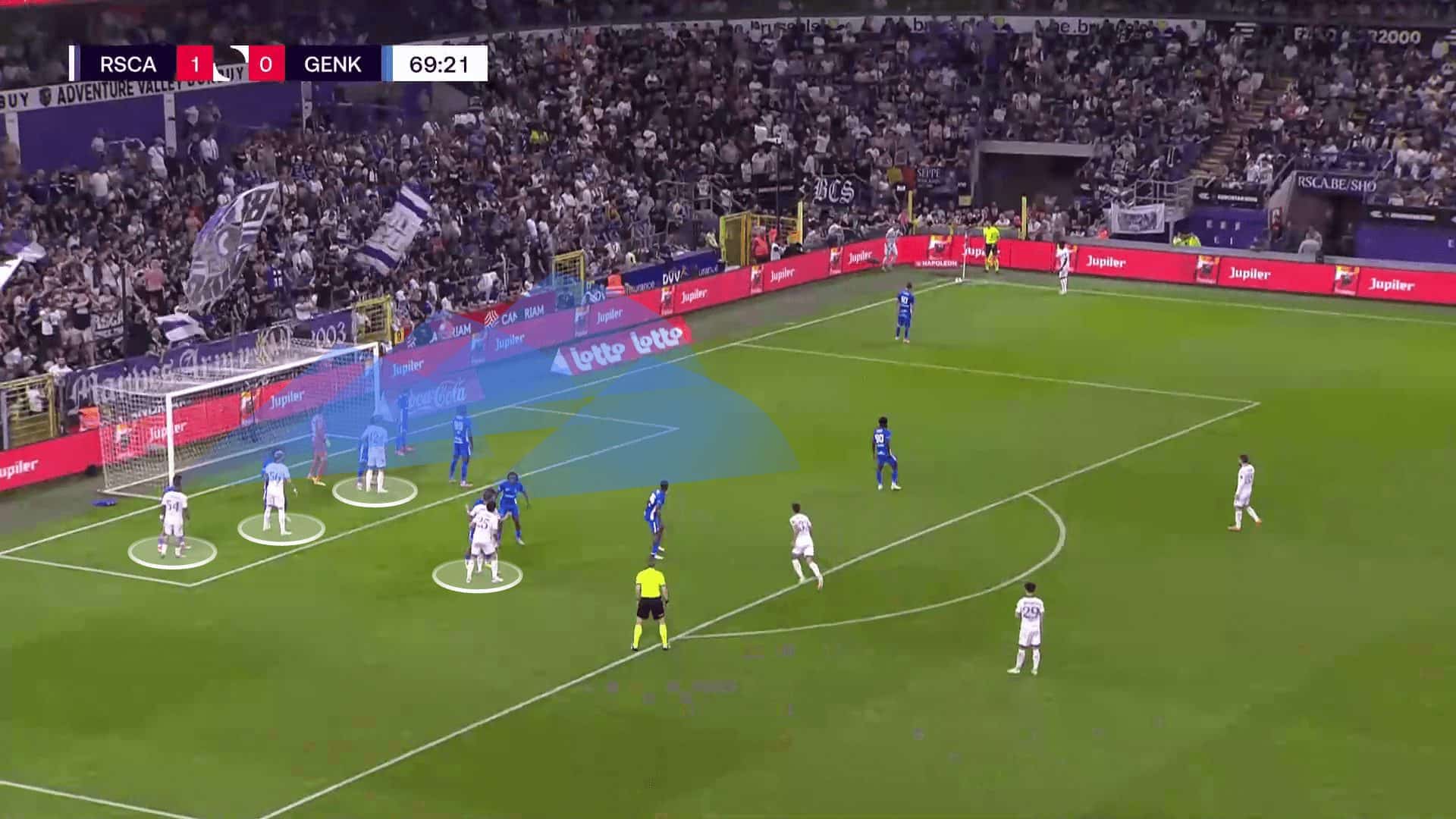
In the example below, the movement attacking the near side of the six-yard box is made as the corner taker begins his run-up.
With the movement arriving from the blindside, the player is able to arrive with a yard of separation to execute the flick-on attempt.
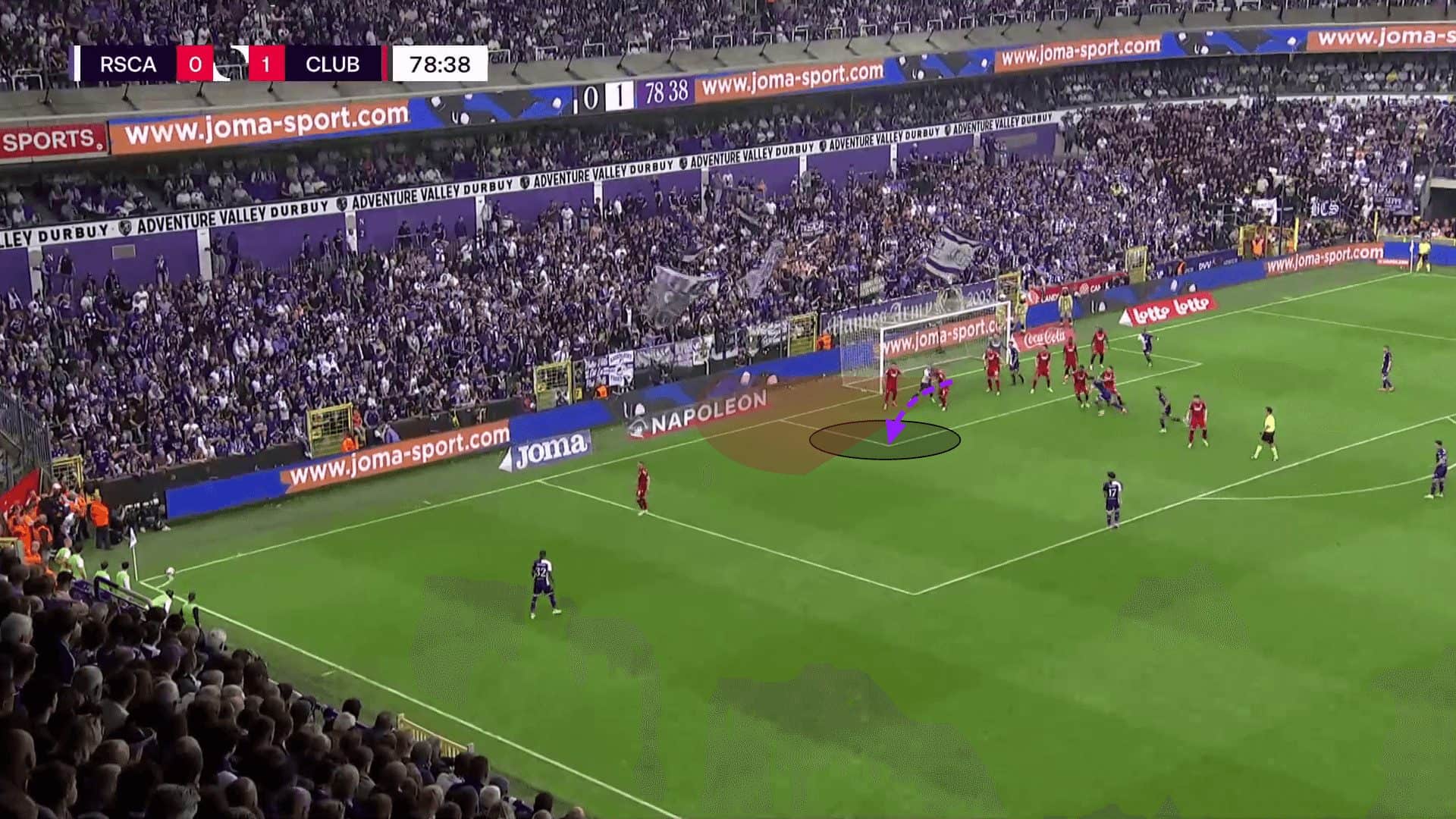
The flick-on is regularly attempted to exploit the space around the back post where a secondary player is arriving.
The issue is in the consistency of the delivery.
At times, the player has to execute the flick with his head, but at other times, the ball is at varying heights, where he has to use other parts of his body, and the execution is harder to get right.
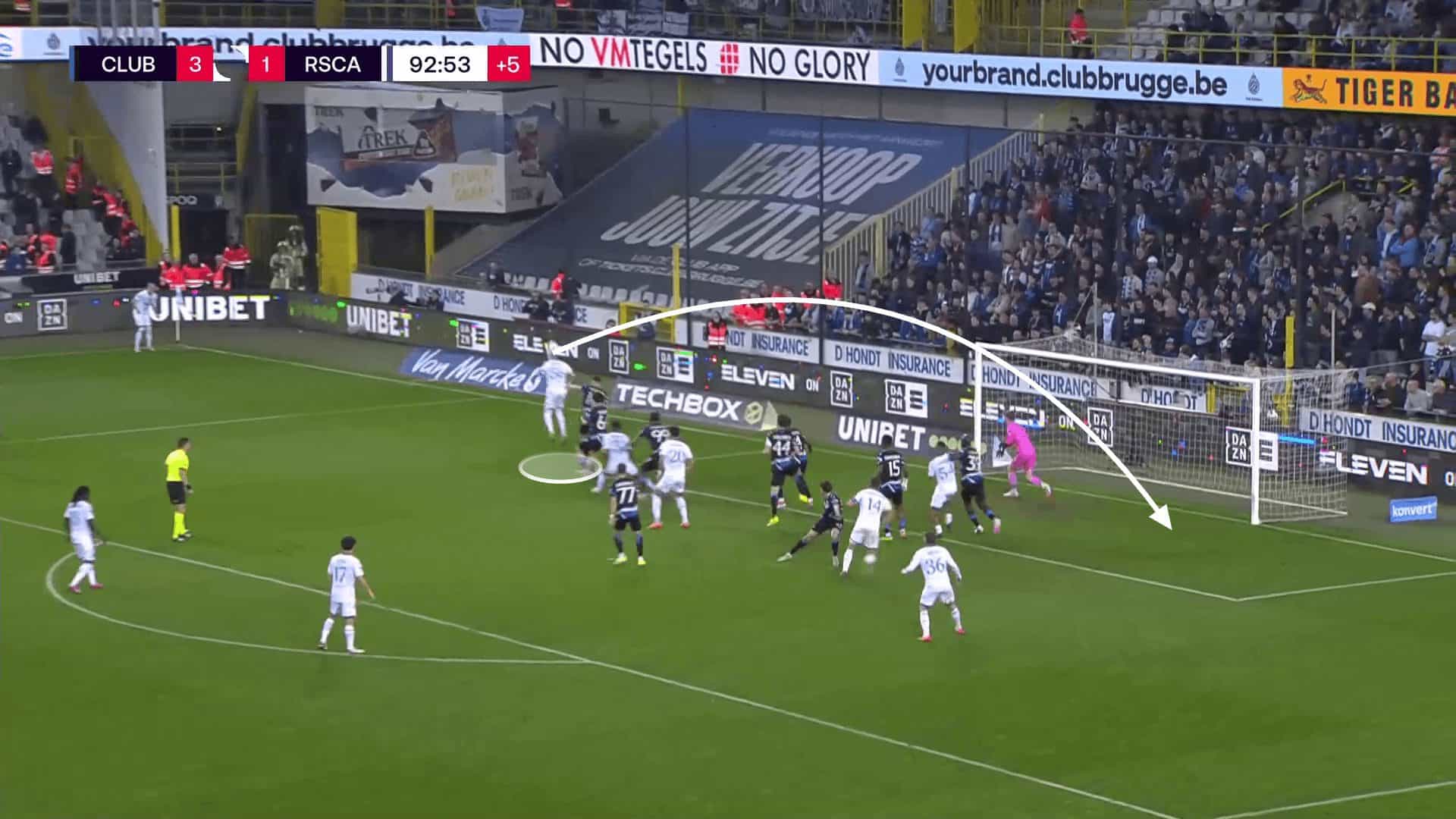
As mentioned earlier, the players inside the six-yard box are also able to set screens in late moments, preventing zonal defenders from attacking the ball moving in their area.
We can also commonly see screens being set on the zonal defenders in the six-yard box, allowing attackers who are positioned deeper to enter the box and arrive unopposed with the zonal defenders immobilized.
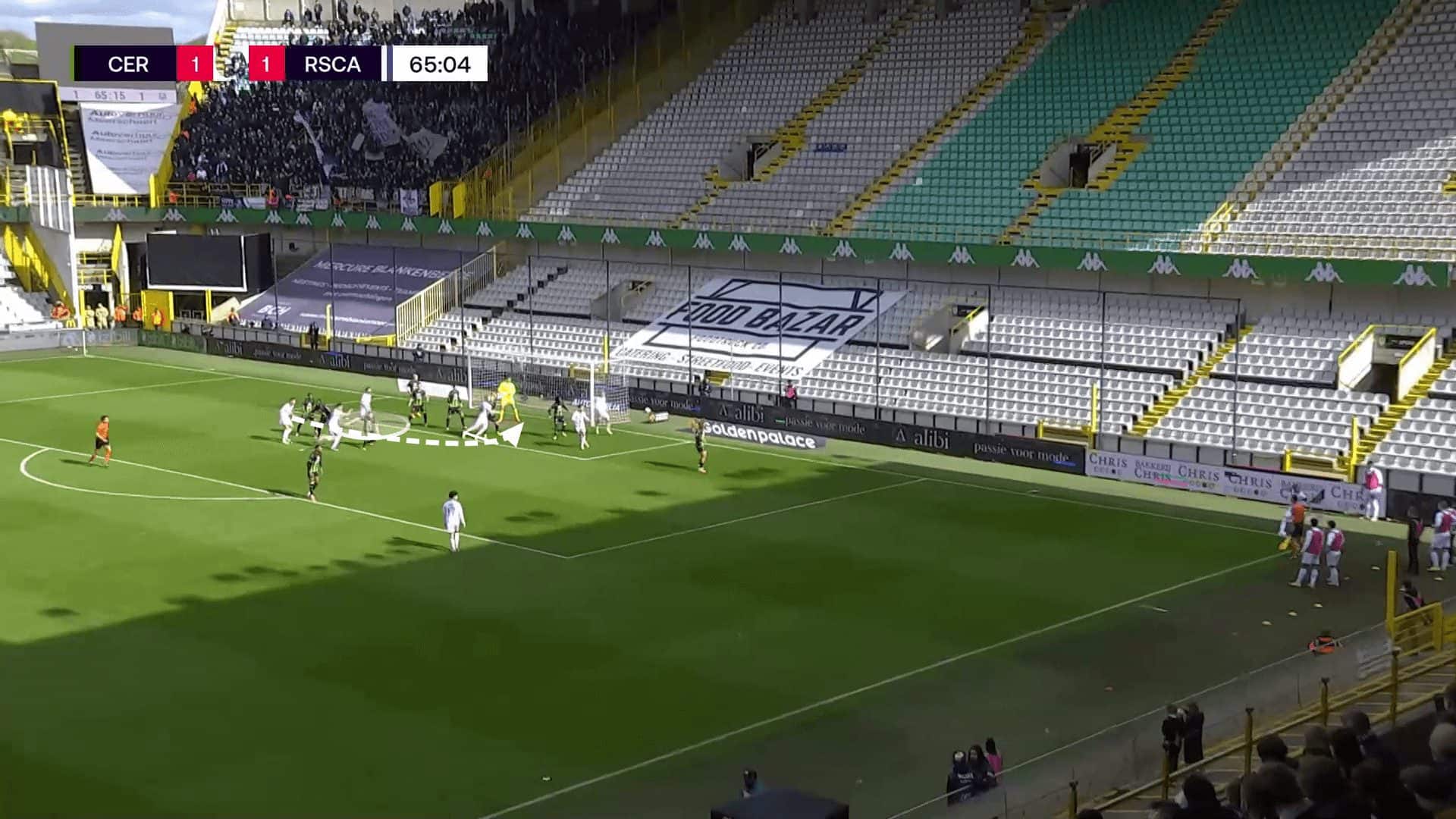
The player located deeper, starting around the six-yard box, is usually Jan Vertonghen.
The ex-Tottenham defender is often left isolated in the deeper area, where we can expect man-markers who are shorter with the purpose of preventing him from accessing the six-yard box.
In these instances, Anderlecht have targeted these deeper areas, where there is a mismatch against the smaller defender, and Vertonghen is able to guarantee his side the first contact inside the penalty area.
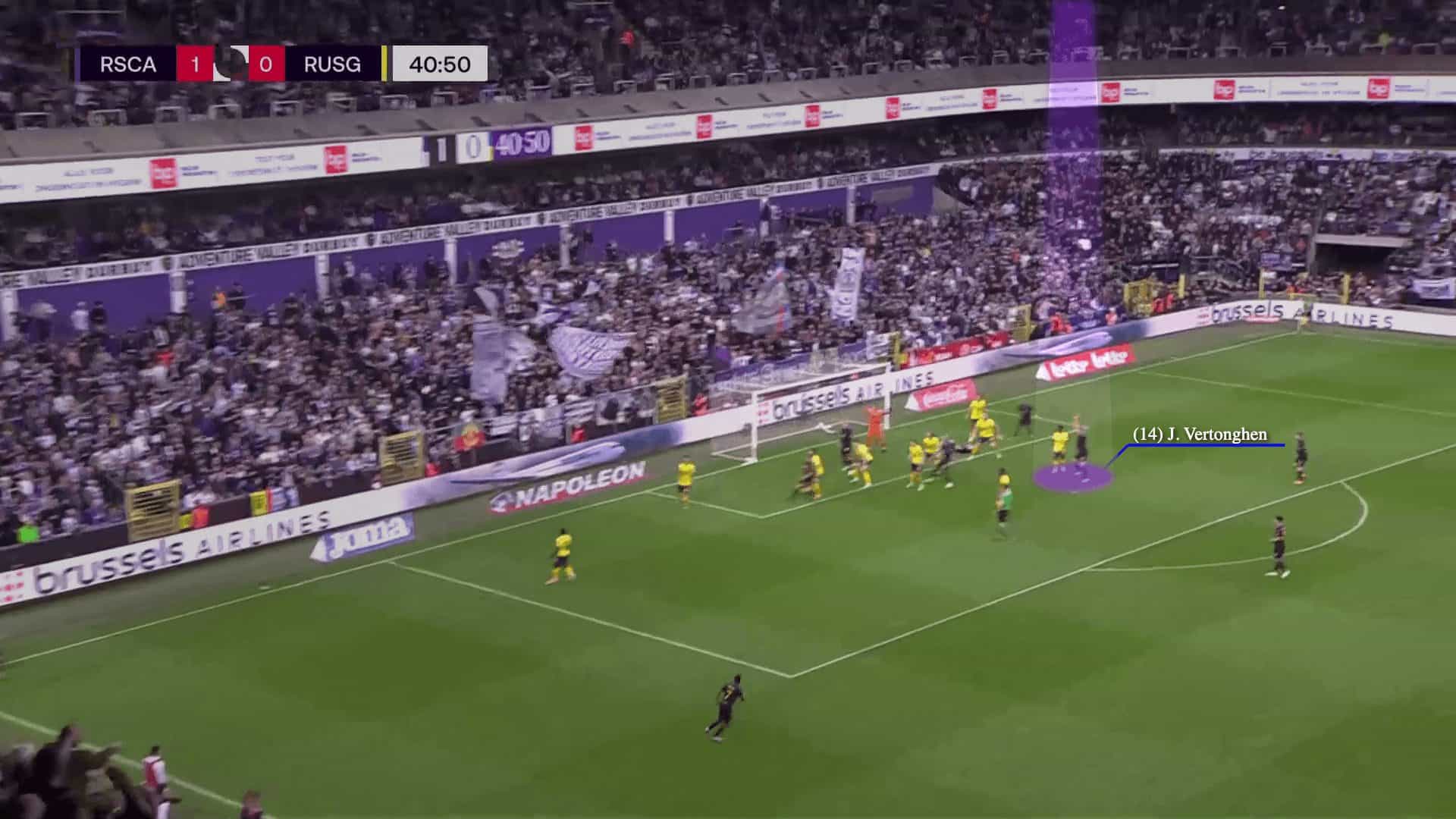
Being able to guarantee the first contact allows Anderlecht to deliver the ball to safer, deeper areas before the ball is redirected into the six-yard box.
Entering the six-yard box after the first contact makes it easier for players to arrive in the higher-value spaces with less defensive coverage, as the defensive bodies start to move towards the ball and follow the ball with their eyes.
This allows other attackers to arrive without a defender tracking their runs, so they are able to make the second contact on the ball in the six-yard box without disruption.
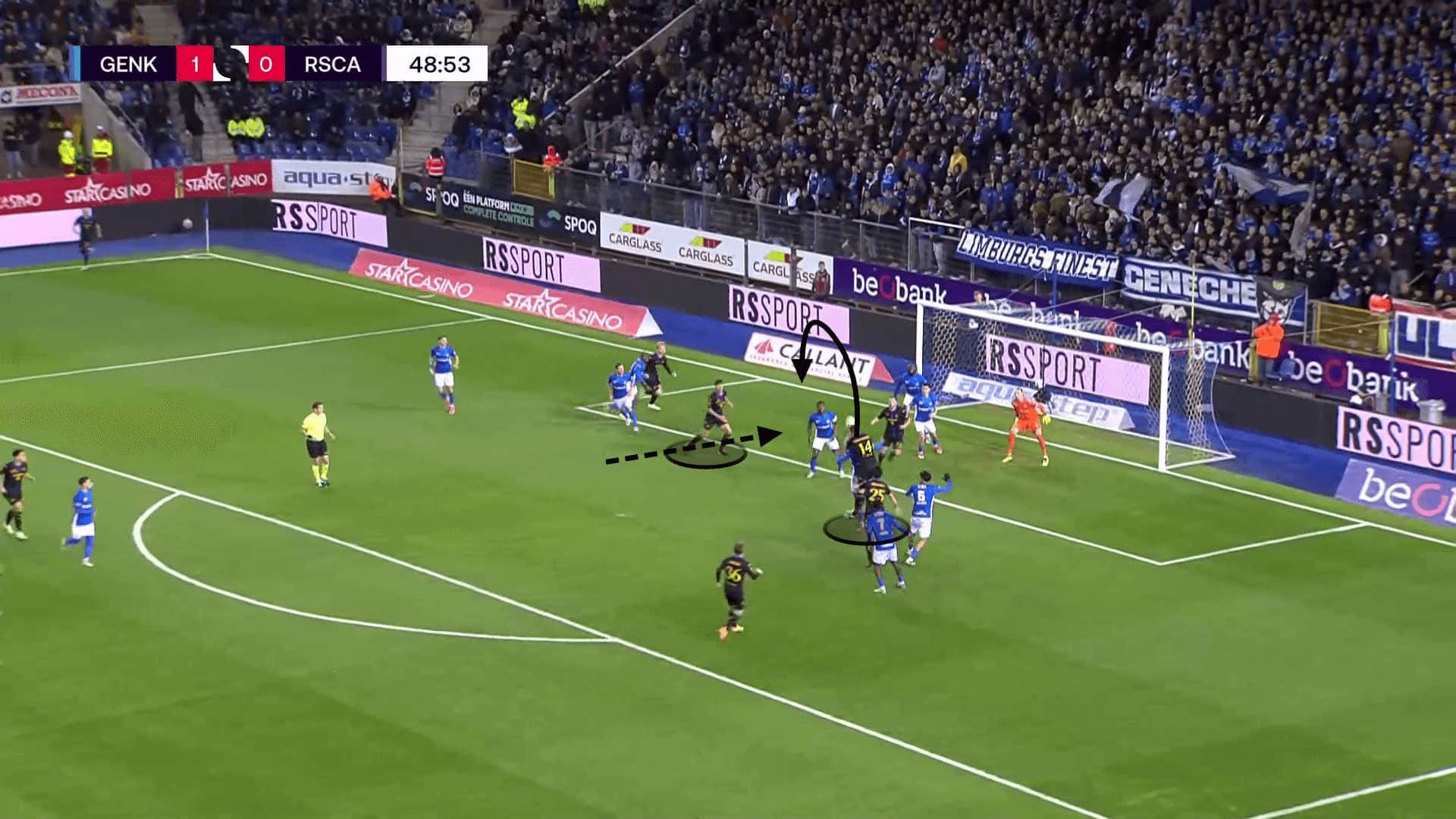
Anderlecht have often attacked with all 10 outfield players, using three players around the edge of the penalty-yard box and six inside the penalty box.
The presence of three players around the box helps Anderlecht sustain pressure on opponents by sweeping up second balls and clearances, leaving the penalty area.
However, having one of the players come to receive a short pass at times means the far side of the penalty area can be left open and vulnerable to being countered.
The use of six attackers inside means that they are able to execute multiple screens or other attempts at disrupting opponents while still having players free to attack the near post and back post and decide whether to collect second balls or make attacking runs into the six-yard box.
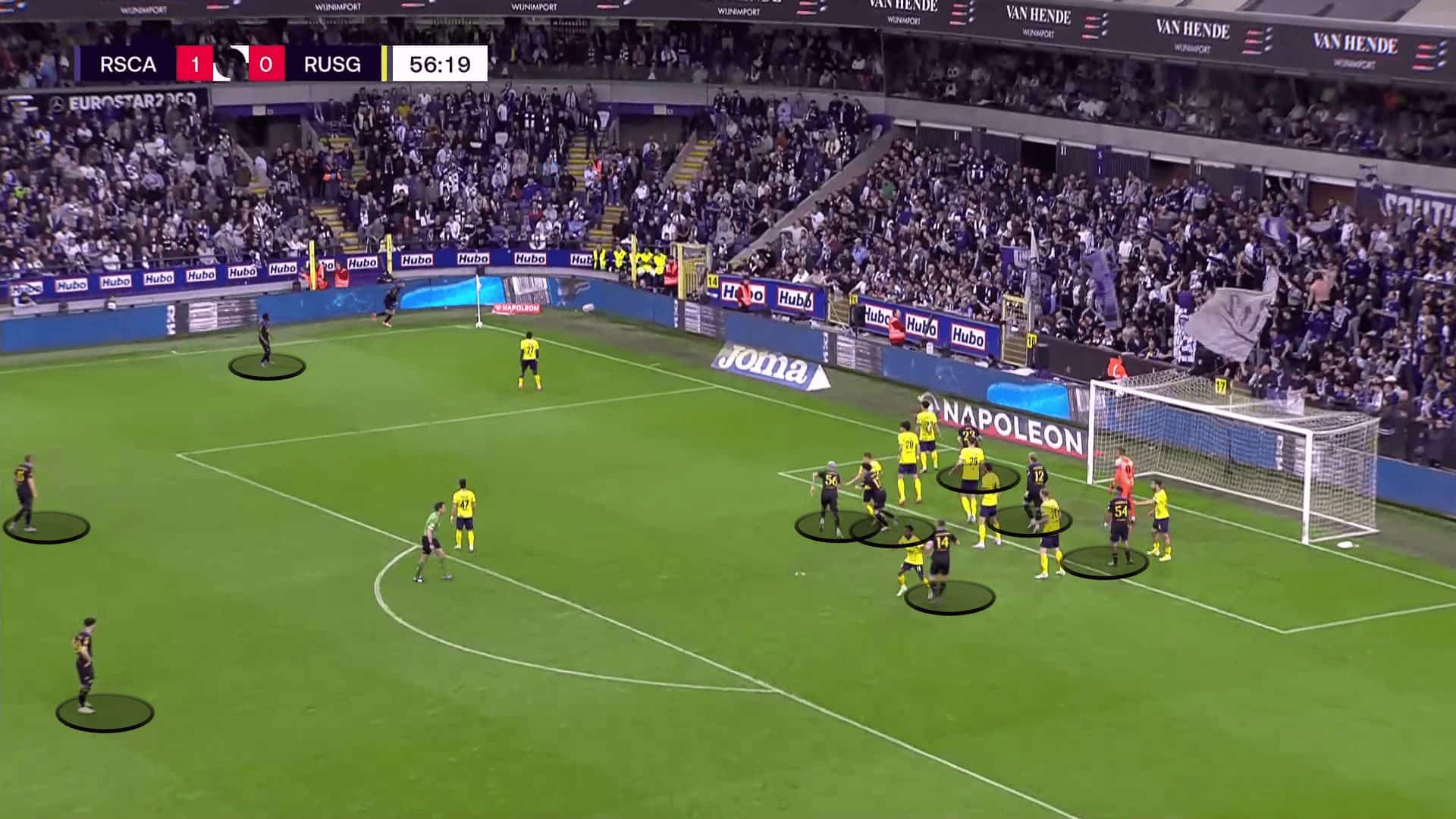
One other method has been a direct pass on the floor into the area just outside the six-yard box, where a player from deep arrives to take a shot on goal.
In order to maximise the amount of space the ball can arrive in, the players inside the six-yard box set screens on the nearest zonal defenders to the target area.
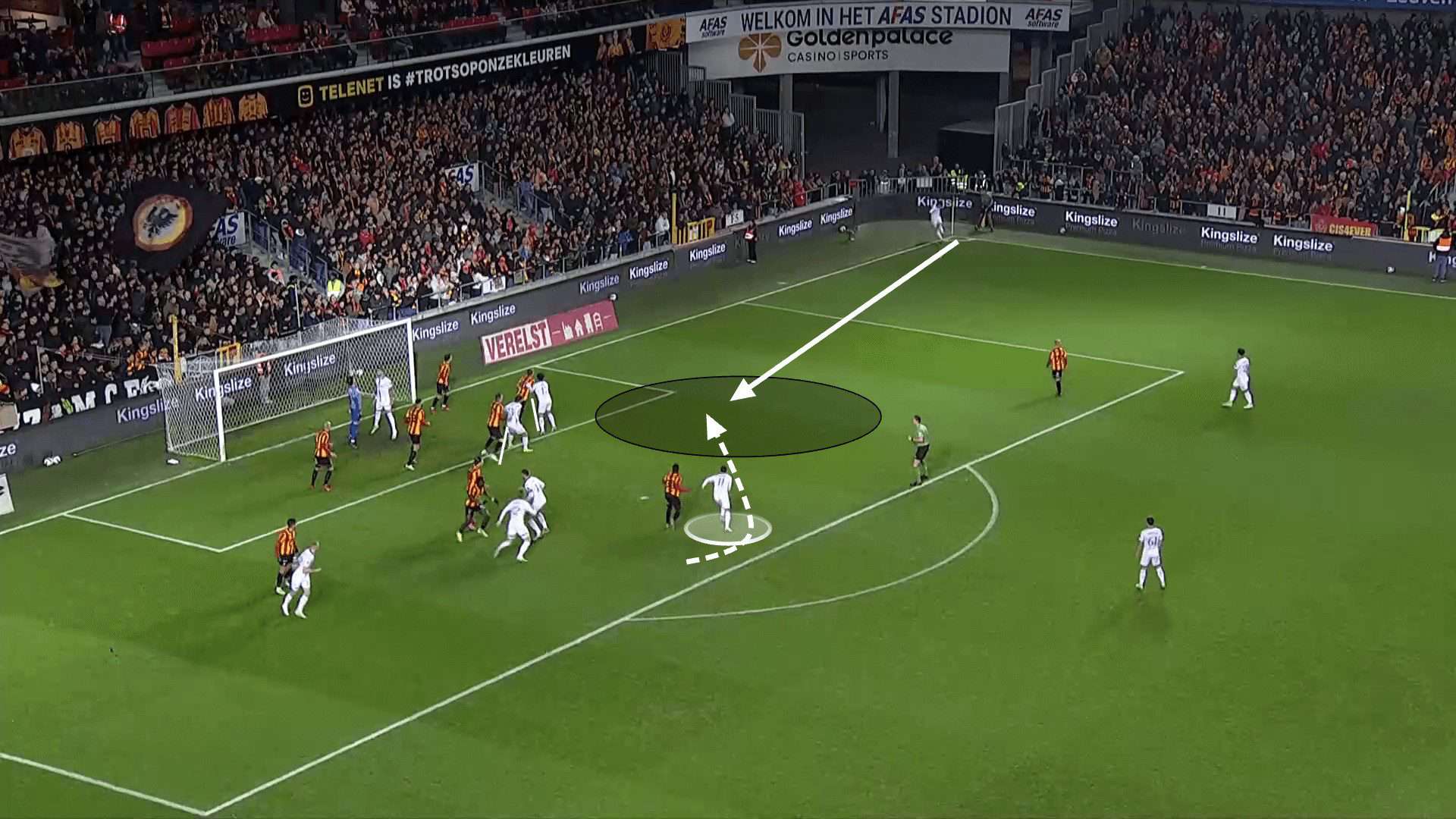
Short Routines
The frequent use of short corner kicks has made Anderlecht stand out and maintain a high threat from set plays, even with a lower level of consistency in their deliveries.
Anderlecht often attempt to ‘upgrade’ the cross by using a short combination between the two players by the corner flag to execute the cross from inside the box.
Being able to deliver the cross from inside the penalty area reduces the distance, making the cross easier to execute, as well as the advantage of the ball being delivered while in open play, making it easier for the attackers inside the box to lose their markers.
The receiver of the short pass turns his body towards his teammates outside of the box to bait the defender into thinking the pass will be played away from the goal.
Then, a clever backheel is played behind him, similar to what Eddie Howe preferred during his time at Newcastle and Bournemouth.
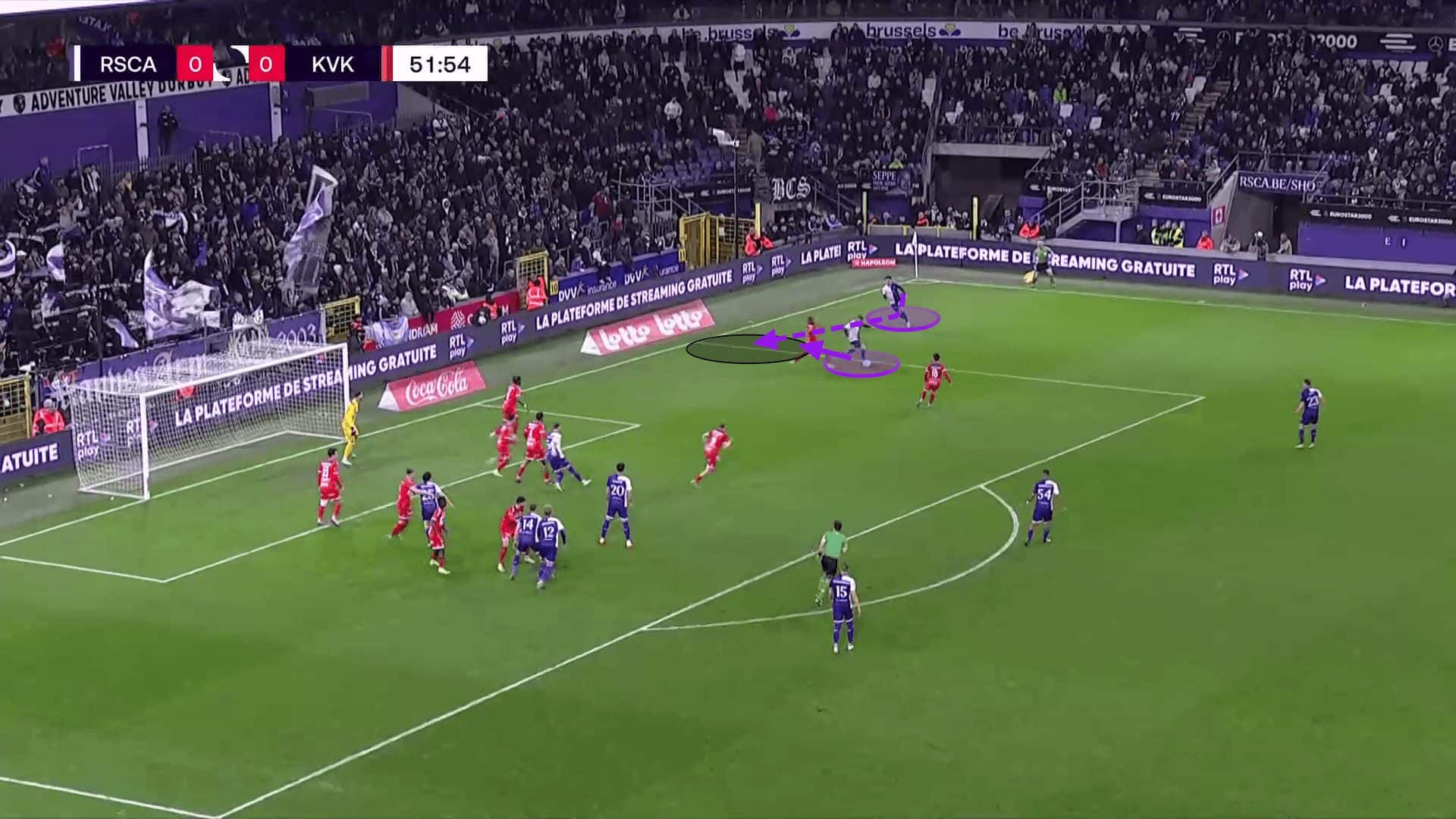
One other routine has been using five attackers around the edge of the penalty area.
With the use of five players, defending teams have a problem.
If they decide to press with numbers, they are sacrificing, leaving the penalty area with fewer numbers, where it will be easier for Anderlecht to find space and get the first contact following a cross.
When the opposition is slow to press the ball, having the overload enables Anderlecht to find a free player around the edge, from where the action, whether it is a shot or a cross, can be ‘upgraded’.
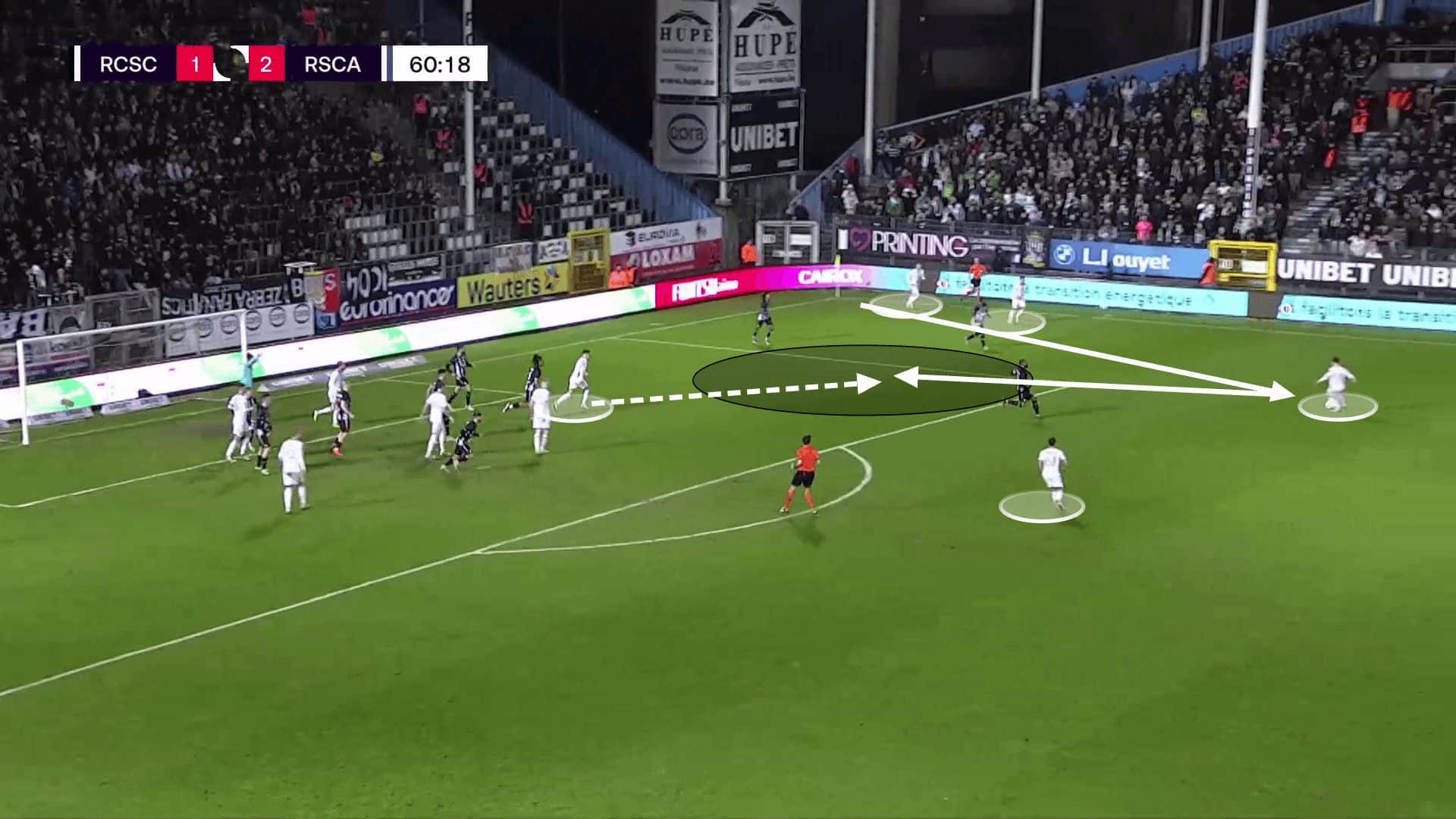
The ball is played to the forward-facing player, who arrives at the edge of the penalty area from deep.
The opposition usually use a high number of defenders inside the six-yard box, which makes it extremely tough for the defenders to step up to the players around the edge of the penalty in time to block the shot or cross.
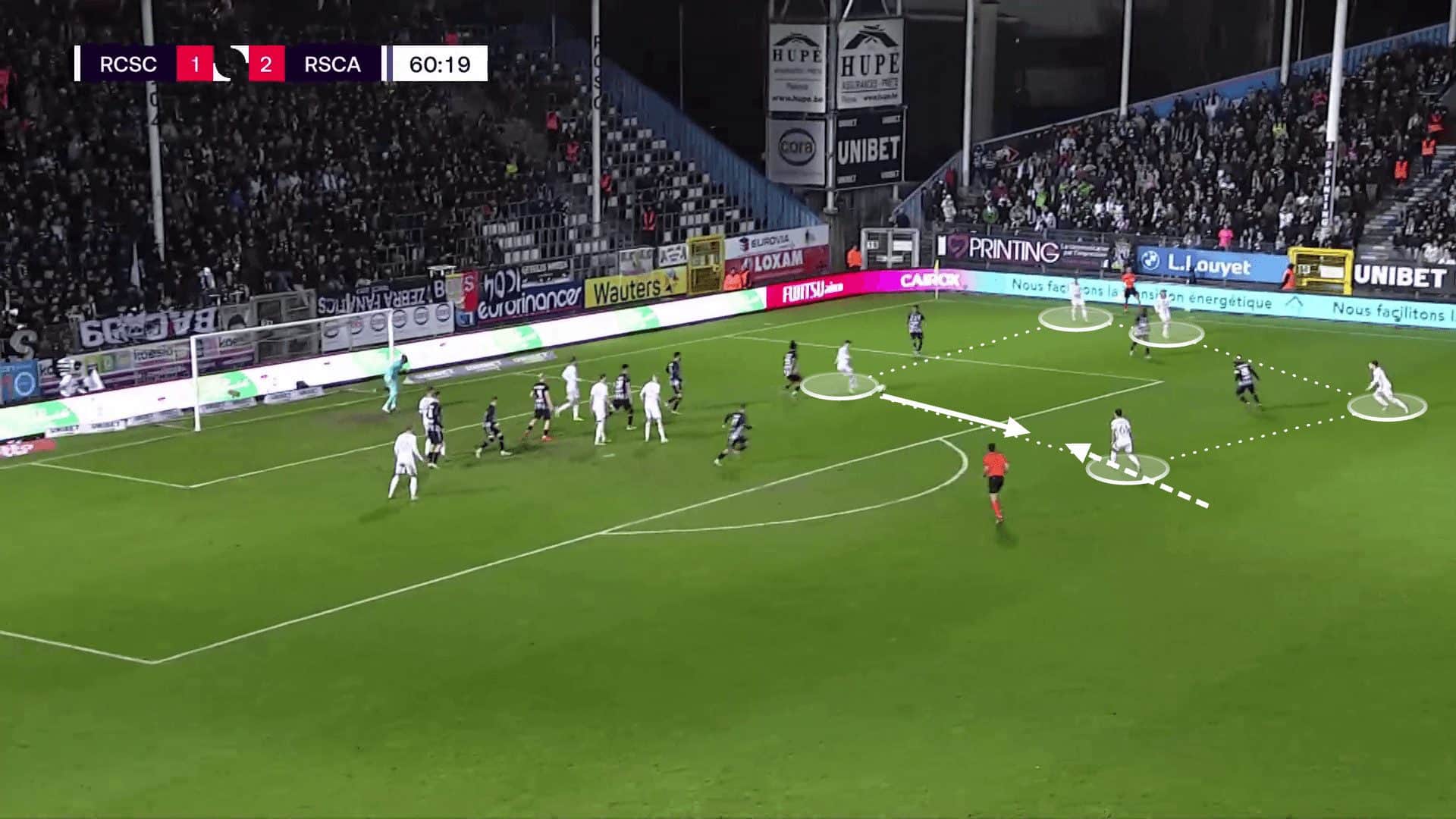
One last routine used has been the pass to the edge of the box to a player arriving from his marker’s blindside.
He is able to arrive in the target area with a couple of yards of space to execute his attempt, but with the player’s momentum moving away from goal, it can be tough to execute the shot attempt to its maximum potential.
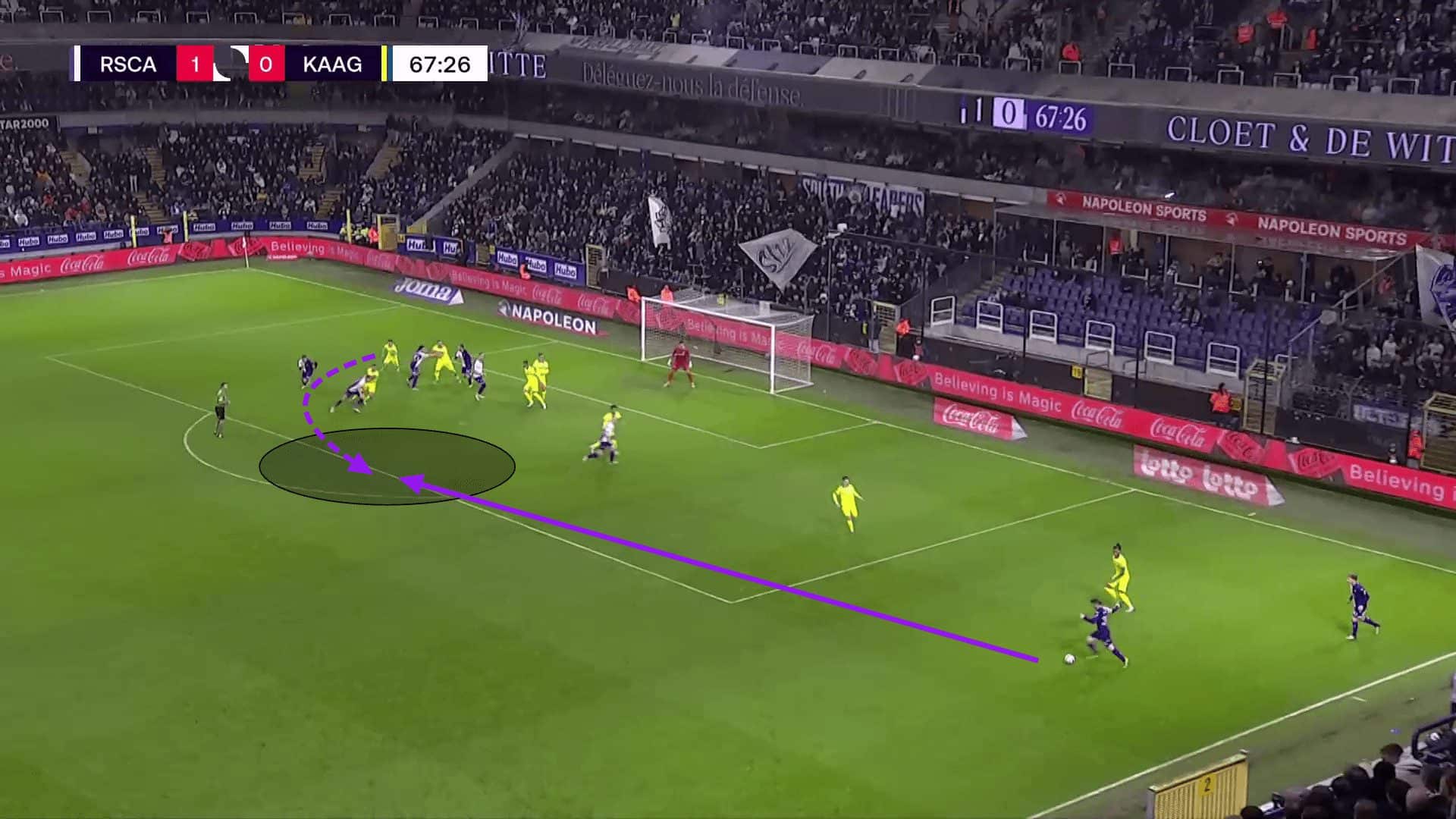
Summary
This tactical analysis has detailed some of Anderlecht’s short corner routines, as well as the method used to create opportunities from direct corner kicks.
Anderlecht attempt to control what happens in and around the penalty area, by dominating different zones through different means, whether it is through physical power, dynamic superiority or clever screens to open up spaces in congested areas.
Their ability to cause threats at so many different zones makes them hard to prepare for and makes the opposition unsure of what to prioritise until the last second.
This makes it easier for every member of the attacking unit to gain separation from their markers and execute their roles properly.
However, with the routines and movements requiring expert precision, we often see the corner routines fall at the first hurdle: the accuracy of the delivery.
The ball has often missed the target area, an assumption made based on the runs and actions of each attacker inside the penalty area, so a lot of well-coordinated movements have failed to come to fruition, something that will hopefully change in the coming season.






Comments